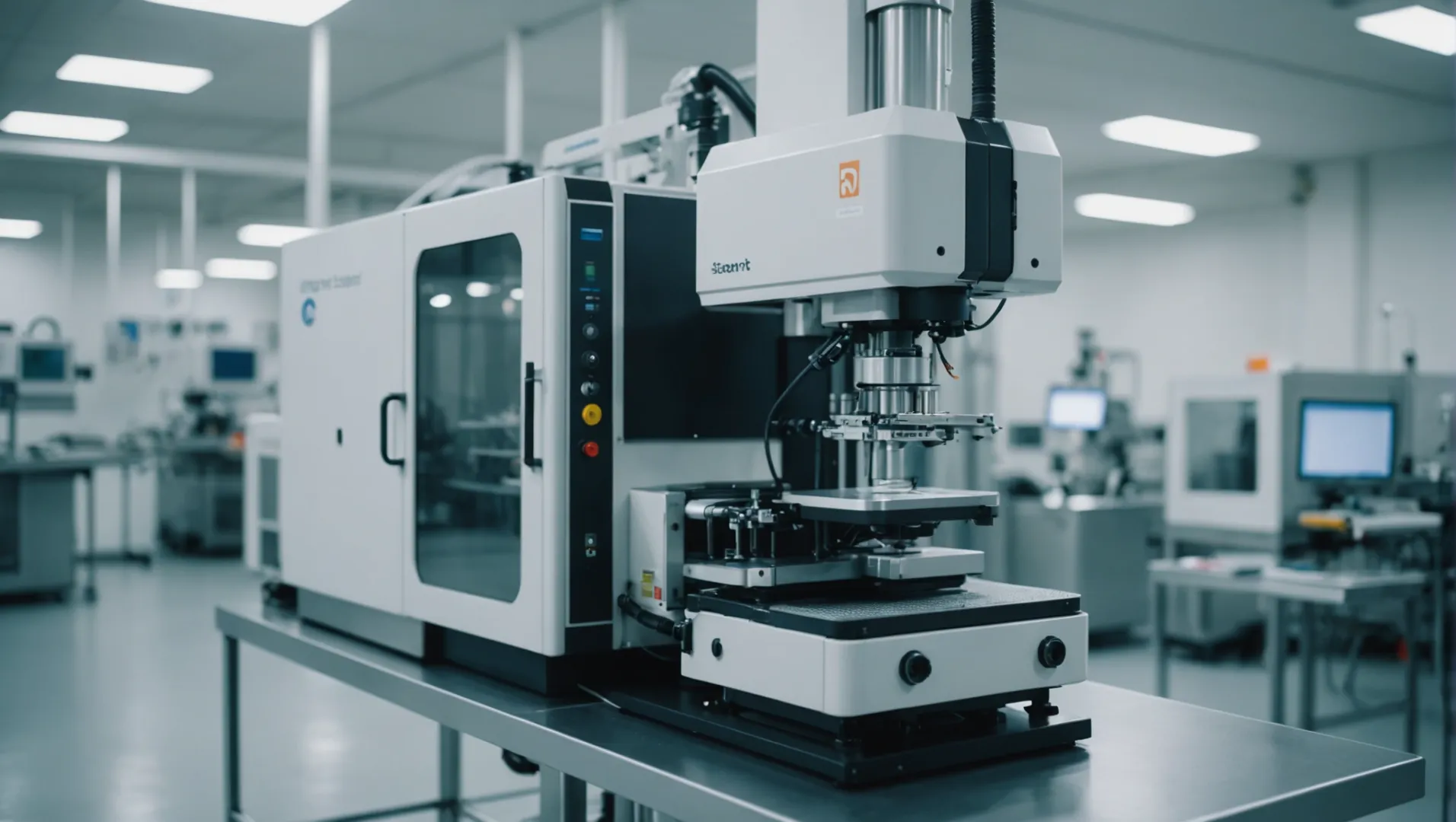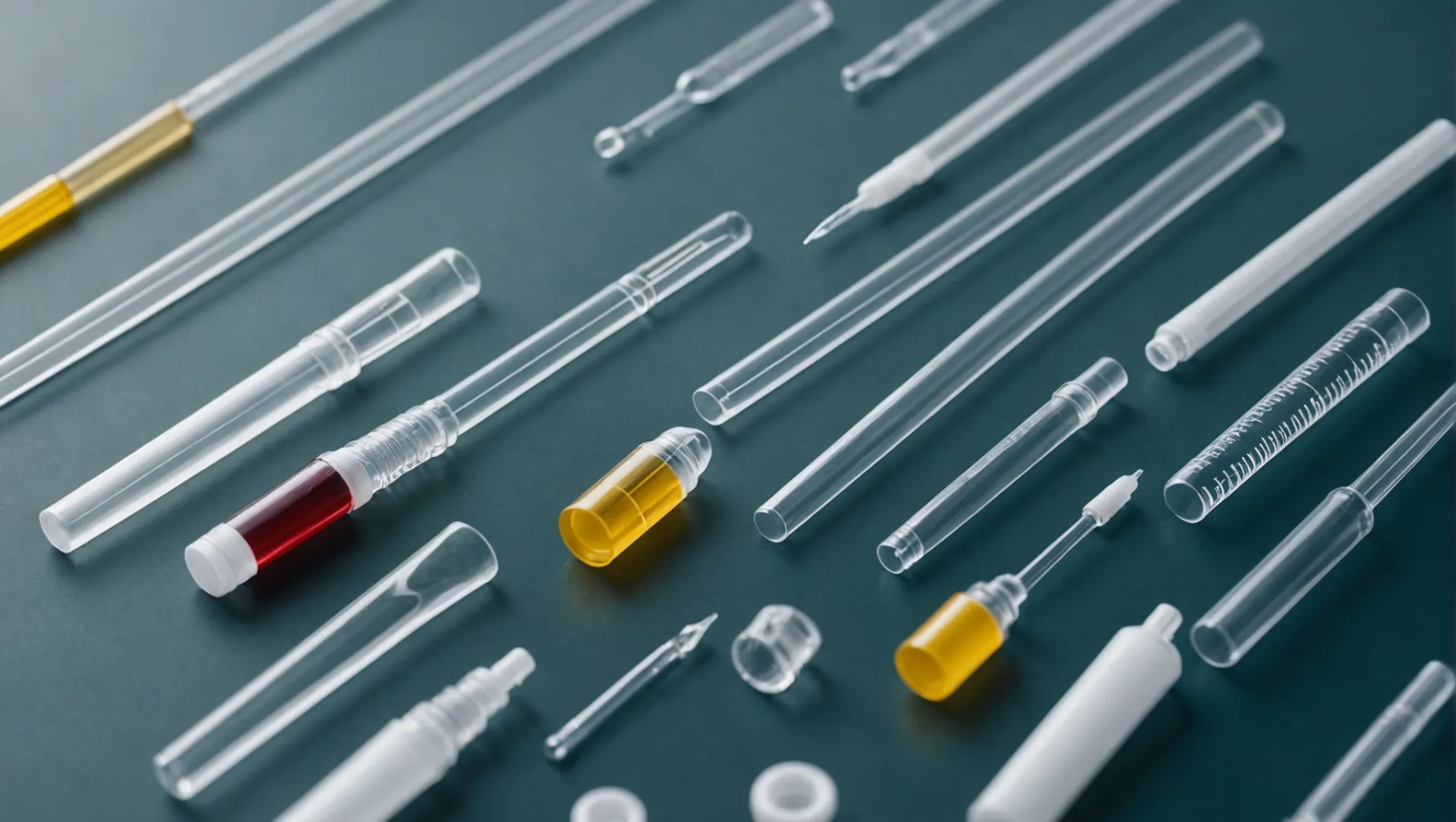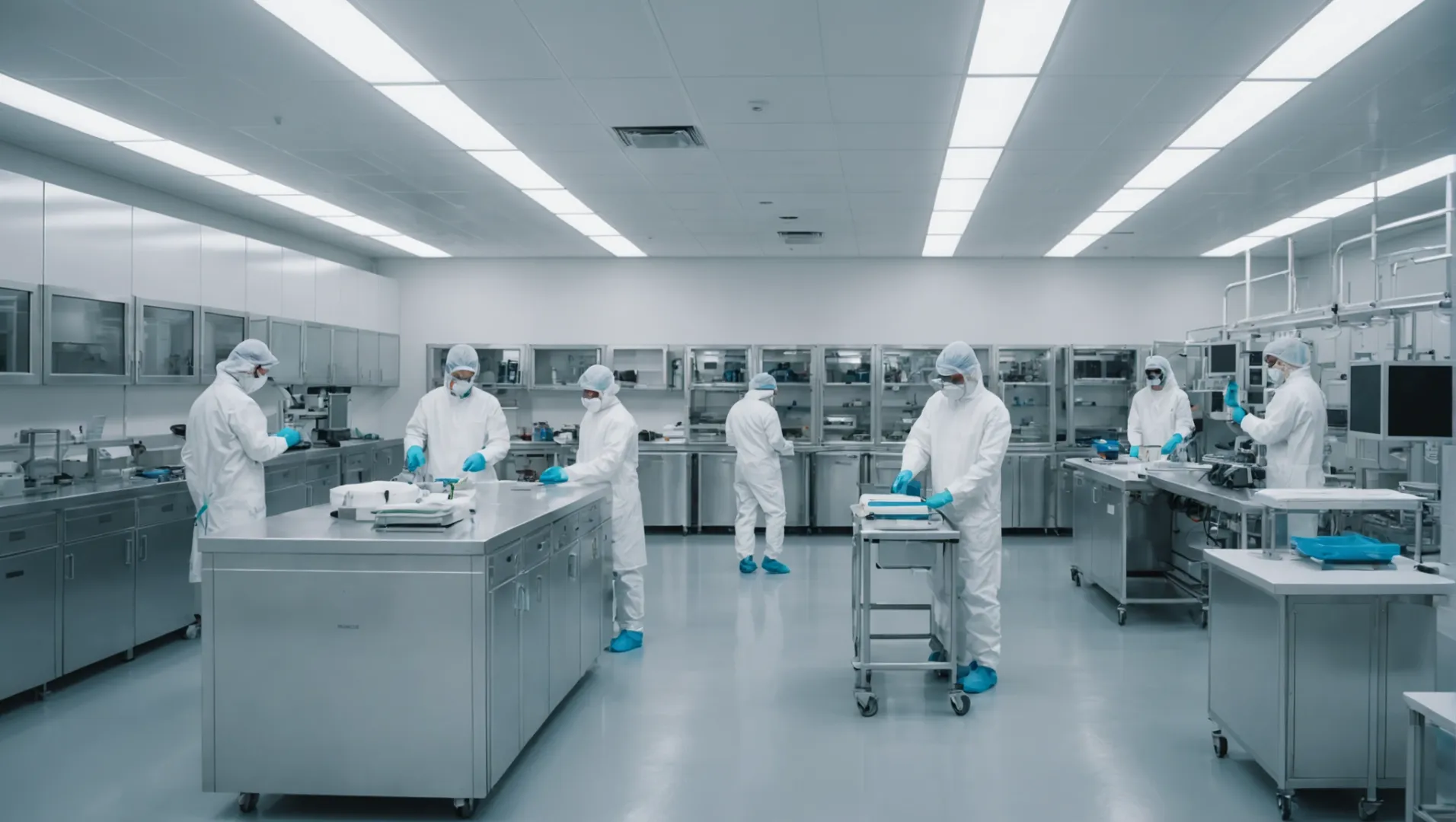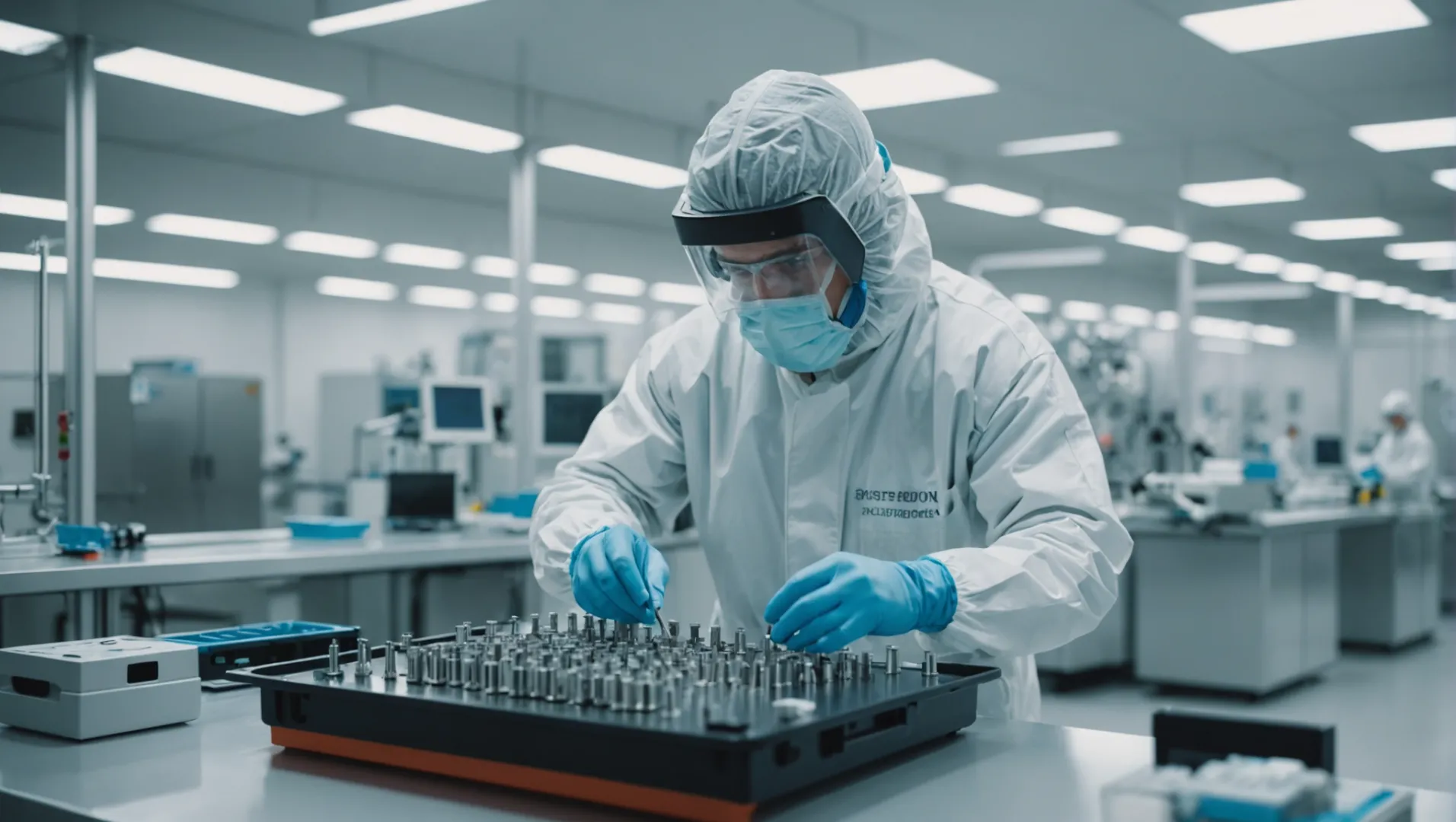
Have you ever thought about what happens in creating the medical tools we depend on? It is a really interesting world where accuracy joins with new ideas.
Key requirements for medical injection molding include the use of biocompatible materials, high dimensional accuracy, and adherence to stringent cleanliness standards. These ensure safety, functionality, and compliance with regulatory standards in medical device manufacturing.
This overview shows important needs. Looking closer uncovers the complex mix of things like material cleanliness and process stability. Knowing these parts is important for keeping product quality and meeting rules. Continue reading to learn more about these key topics.
Biocompatibility is crucial in medical injection molding.True
Biocompatibility guarantees materials do not provoke bad responses inside the body.
What Materials Are Best for Medical Injection Molding?
Selecting suitable materials for medical injection molding is important for device safety and function.
Optimal materials for medical injection molding are those with exceptional biocompatibility, corrosion resistance, and high purity. These attributes ensure that the materials do not cause adverse reactions in the human body and can withstand sterilization processes, maintaining their structural integrity and performance in medical applications.

Biocompatibility in Medical-Grade Plastics
One of the most critical considerations in selecting materials for medical injection molding is biocompatibility1. The materials must be non-toxic, non-irritant, and non-sensitizing. This ensures that they do not provoke any allergic reactions or other adverse responses when in contact with the human body. For instance, common biocompatible plastics include polyethylene and polypropylene, which are often used in disposable syringes and surgical instruments.
Corrosion Resistance and Durability
Medical environments expose materials to a range of sterilizing agents, medications, and bodily fluids. Therefore, materials must exhibit excellent corrosion resistance to maintain stable performance over time. Polycarbonate and polyetheretherketone (PEEK) are examples of materials known for their resilience in harsh chemical environments, making them ideal for use in medical components.
| Material | Key Properties | Common Applications |
|---|---|---|
| Polycarbonate | High impact resistance, transparent | Syringes, oxygenators |
| Polypropylene | Chemical resistance, lightweight | Disposable syringes, tubing |
| PEEK | High strength, chemical resistance | Surgical instruments, implants |
High Purity Standards
Materials must also possess high purity levels to ensure safety. Even trace impurities can compromise the safety of medical devices. For example, during the production process, rigorous testing is conducted to detect and eliminate any impurities that could pose a risk.
Precision and Dimensional Accuracy
The high precision required in medical injection molding ensures that each component fits seamlessly with other parts of a medical device. This precision is critical because even minor deviations can affect the overall functionality and safety of the device. Thus, manufacturers employ advanced techniques to maintain dimensional accuracy across all components.
Consistency and Quality Assurance
Consistency in manufacturing is vital to prevent variability that could lead to potential medical risks. Maintaining this consistency requires strict quality control measures throughout the production process, ensuring each batch meets the exact standards set forth by regulatory bodies.
By focusing on these key material properties—biocompatibility, corrosion resistance, high purity, and precision—manufacturers can ensure that their products not only meet regulatory standards but also provide safe and effective solutions in the medical field.
Polycarbonate is used in disposable syringes.False
Polycarbonate material serves in making syringes and oxygenators, but not in single-use syringes.
PEEK offers high strength and chemical resistance.True
PEEK is famous for its great strength and strong resistance to chemicals, perfect for medical use.
How Does Precision Impact Medical Device Safety?
Accuracy in creating medical tools is not only about quality; it is a key element in keeping patients safe.
Precision impacts medical device safety by ensuring components fit accurately, preventing malfunctions, and maintaining biocompatibility. Precise manufacturing reduces risks associated with dimensional inaccuracies that could lead to device failures or adverse patient reactions.

The Role of Precision in Component Fit
In medical devices, each component must fit seamlessly with others to function correctly. A high degree of dimensional accuracy2 is essential. For instance, in devices like insulin pumps or pacemakers, even a minor misalignment can result in device malfunction, posing serious health risks to patients.
Precision and Biocompatibility
Precision in injection molding also ensures that parts are free from defects such as burrs or rough edges, which could irritate or harm tissue. This is especially crucial given the biocompatibility requirements3 that materials must meet. These standards ensure that devices do not cause allergic reactions or toxicity when in contact with the body.
Impact on Consistency and Reliability
Consistency in precision across multiple production runs ensures that each medical device performs reliably. This uniformity is achieved through rigorous process controls and quality assurance measures, including traceability systems4. Such systems allow manufacturers to track each component’s journey from raw material to finished product, ensuring accountability and facilitating problem-solving.
Challenges in Achieving Precision
Maintaining precision in medical device manufacturing involves overcoming several challenges. These include controlling environmental factors like temperature and humidity, which can affect material properties, and implementing stringent cleanliness standards to prevent contamination.
The Future of Precision in Medical Manufacturing
Advancements in technology, such as 3D printing and automated quality control, are pushing the boundaries of precision in medical manufacturing. As these technologies evolve, they promise to enhance precision further, improving both the safety and efficacy of medical devices. However, the integration of these technologies must be managed carefully to align with existing regulatory frameworks and safety standards.
Precision ensures medical device biocompatibility.True
Exactness stops faults that might lead to allergic responses or harmful effects.
Misalignment in devices like pacemakers is harmless.False
Even small disagreements might cause device problems and health dangers.
Why Is a Clean Production Environment Crucial?
In medical device creation, keeping a spotless production setting is vital for safety and effectiveness.
A clean production environment prevents contamination, ensuring the safety and reliability of medical devices. It involves controlling dust, microorganisms, temperature, and humidity to maintain material stability and product integrity. Compliance with cleanliness standards like 100,000 class environments is essential in medical injection molding.

Why Cleanliness Matters
Keeping things clean in medical injection factories is very important. These places need very high standards, including a 100,000 class cleanroom, which stops dirt and germs from reaching the products.
These factories have advanced filters to keep the air clean. This is crucial to stop contamination. Dirty conditions can cause health problems when the device is used in hospitals.
Contamination Control: More Than Just Clean Air
Preventing contamination is not only about clean air. It also involves keeping the right temperature and humidity. This helps materials stay stable and work correctly during production.
Materials for medical injection molding must be safe for the body and resistant to damage from cleaning methods. A clean place helps these materials stay good and free from harmful particles.
- Biocompatibility: Materials must exhibit excellent biocompatibility5 to ensure safety.
- Resistance: They should resist corrosion from various sterilization methods.
Temperature and Humidity: Key Elements
Keeping the right temperature and humidity is very necessary:
- Material Consistency: Changes in these factors can alter material properties, causing defects.
- Quality Assurance: Consistent conditions help all products meet quality standards.
Good temperature and humidity control ensure medical components are precise and work well in complicated devices, maintaining high precision6.
Quality Through Strict Standards
A clean factory supports strong quality checks. By reducing contamination, testing of materials and products becomes more accurate.
- Intensive Testing: Confirms each piece meets necessary standards.
- Tracking Systems: Finds and fixes problems by tracking production stages through traceability systems.
Understanding why a clean environment is important helps manufacturers keep medical devices safe and effective, ultimately protecting patients.
Cleanrooms prevent contamination in medical device production.True
Cleanrooms keep dust and tiny living things controlled, stopping dirt from spreading.
Humidity levels have no impact on material stability.False
Changes in moisture levels may influence the qualities and firmness of substances.
What Are the Key Quality Control Measures?
Quality checks are vital in medical injection shaping to confirm safety and function.
Key quality control measures in medical injection molding include rigorous testing of materials, maintaining strict cleanliness standards, ensuring high precision in part manufacturing, and implementing robust traceability systems to swiftly address any issues.

Using Careful Testing Systems
In the field of medical injection molding7, thorough testing systems are necessary. Tests happen at different stages, like in raw materials, partly done and finished items. These checks include looking at how materials behave physically, their chemical steadiness, and if they are safe to use with human tissue. This step avoids bad reactions when parts touch the body.
Check, for example, biocompatible materials. It is vital to prove they do not cause allergies or harmful effects on the body. Resistance to rust is also very important, as materials go through cleaning and face exposure to medicines.
Accuracy and Uniformity
Exactness in molding is needed so parts fit correctly in bigger medical tools. This easiness reduces problems from equipment not working well. Keeping measurements precise guarantees each piece fits well with others, maintaining the device’s structure.
Furthermore, uniformity in production is crucial. Differences in part quality may lead to performance trouble, risking patient well-being. So, getting all parts to be the same is an essential goal in quality checks.
Pure Production Settings
A clean production area is critical to stop impurities. Usually, medical injection molding happens in a controlled cleanroom, meeting strict cleanliness standards like ISO 14644 Class 8 or better. This setting lowers dust and germs in products, crucial because even tiny impurities can be dangerous.
Controlling temperature and moisture ensures materials stay stable, helping a better production flow.
Strong Tracking Systems
A clear tracking system helps easily spot and fix problems if they occur. This system follows every step from getting materials to delivering the finished items. Such tracking means any faults can quickly be traced back, allowing fast fixes to stop them from happening again.
Following these quality-check methods not only increases the safety and dependability of medical tools but also meets strict industry rules, protecting both makers and users.
Testing protocols ensure biocompatibility of materials.True
Examinations verify parts do not lead to harmful effects in the body.
Cleanroom standards are irrelevant in medical molding.False
Cleanrooms stop dirt, essential for keeping patients safe and ensuring products remain intact.
Conclusion
Comprehending medical injection molding leads to secure, compliant items. Concentrate on choosing the right materials, accuracy and quality management improves product standards and matches regulatory requirements.
-
Discover how biocompatible materials ensure safety in medical devices.: 15 Biocompatible Materials · Alumina (a ceramic biomaterial) · Bioglass (ceramic biomaterial) · Cobalt-chromium alloy (metal) · Hydroxyapatite (ceramic biomaterial). ↩
-
Explore why precise component fit is vital for device functionality.: Using dimensional inspection as part of the quality control process for high-precision manufacturing ensures that each part meets the required … ↩
-
Understand how precision aids in meeting biocompatibility standards.: This page provides basics on biocompatibility assessment, including sources for more detailed information as well as links to glossary definitions. ↩
-
Learn about the role of traceability in ensuring device safety.: Traceability enables you to see the movement of medical devices and parts across the supply chain. You can trace the history of the transfers and locations of … ↩
-
Learn about the importance of biocompatibility in medical device safety.: The short answer is that biocompatibility testing is almost always required for medical devices that have contact with human tissue. Contact can … ↩
-
Discover how precision impacts safety in medical devices.: Manufacturing for precision and accuracy is critical in medical applications to ensure proper function, long service life, patient safety, and … ↩
-
Learn about critical testing protocols ensuring material safety and efficacy.: Medical device testing is a critical component of the product development process, ensuring that devices are safe, effective, and compliant with regulatory … ↩






